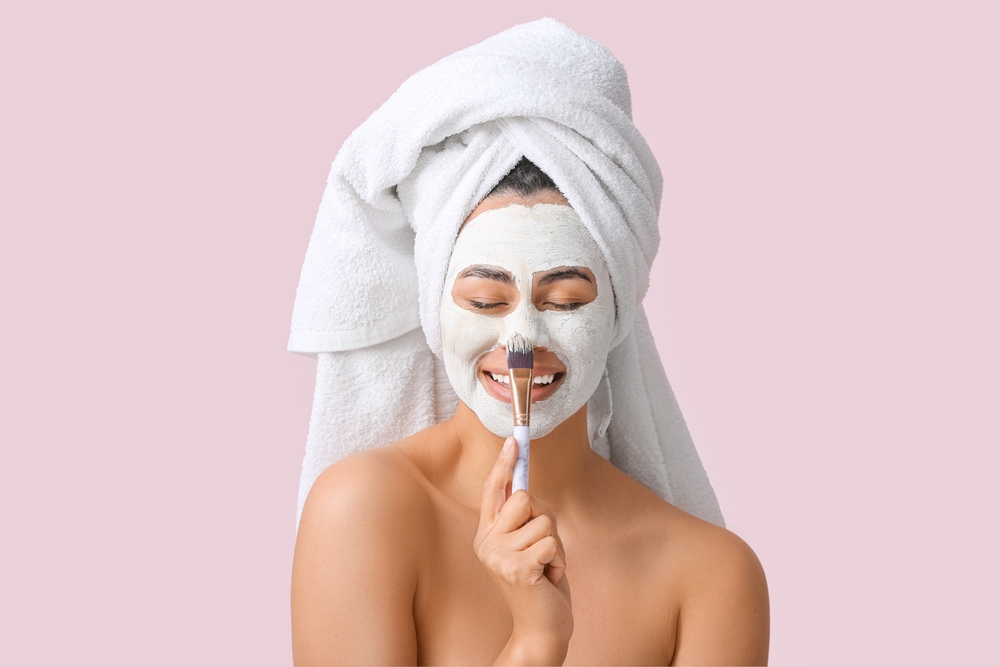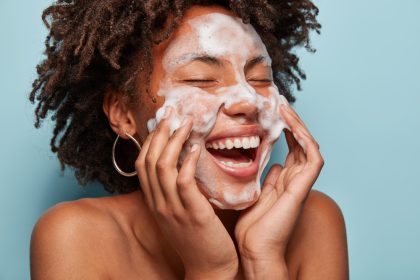You’re standing in the skincare aisle staring at rows of clay masks and enzyme peels, wondering which one will finally solve your skin problems. Both promise to transform your complexion, but they work in completely different ways and target entirely different skin issues. Choosing the wrong one could waste your money and potentially make your skin problems worse.
The confusion is understandable because both treatments are often marketed as solutions for similar concerns like dull skin, clogged pores, and uneven texture. But clay masks and enzyme peels operate through completely different mechanisms and are designed for different skin types and concerns.
Understanding how each treatment actually works will help you choose the right one for your specific skin needs, potentially saving you from months of trial and error with products that weren’t designed for your particular skin challenges.
Clay masks work like tiny magnets for oil and toxins
Clay masks function through a process called adsorption, where the clay particles literally pull oil, dirt, and impurities out of your pores like microscopic magnets. Different types of clay have different adsorption capacities and target different types of skin concerns.
Bentonite clay carries a negative electrical charge that attracts positively charged toxins, excess oil, and bacteria. When you apply a bentonite mask, it creates a powerful drawing effect that can pull impurities from deep within your pores, making it particularly effective for oily and acne-prone skin.
French green clay is more gentle but still highly effective at absorbing excess sebum and removing dead skin cells from the surface. It’s rich in minerals that can help balance oil production over time while providing immediate pore-clearing benefits.
Kaolin clay is the mildest option, suitable for sensitive skin types that need gentle purification without over-drying. It removes surface impurities and excess oil while maintaining your skin’s natural moisture balance.
Enzyme peels dissolve dead skin through biological action
Enzyme peels work through a completely different mechanism called enzymatic exfoliation. Instead of pulling things out of your skin, enzymes break down the proteins that hold dead skin cells together, allowing them to shed naturally and reveal fresher skin underneath.
Papain, derived from papaya, specifically targets keratin proteins that make up dead skin cells. This enzyme is particularly effective at breaking down the protein bonds that cause skin to look dull and feel rough, making it ideal for improving skin texture and brightness.
Bromelain from pineapple has anti-inflammatory properties in addition to its exfoliating effects. This enzyme not only helps remove dead skin cells but also helps calm redness and irritation, making it suitable for sensitive skin types that can’t handle physical scrubs.
Pumpkin enzymes contain natural fruit acids that provide gentle chemical exfoliation while the enzymatic action breaks down dead skin cells. This dual action makes pumpkin enzyme peels particularly effective for addressing sun damage and age spots.
Your skin type determines which treatment you need
Oily and acne-prone skin typically responds better to clay masks because these skin types produce excess sebum that needs to be physically removed from pores. The drawing action of clay helps prevent pore blockages that lead to blackheads and breakouts.
If your main concerns are excess oil, large pores, and frequent breakouts, clay masks should be your primary treatment choice. The key is using them consistently but not too frequently, as over-use can trigger increased oil production.
Dry and mature skin usually benefits more from enzyme peels because these skin types need gentle exfoliation to remove the buildup of dead cells that make skin look dull and feel rough. Enzyme peels provide this exfoliation without stripping away essential moisture.
Sensitive skin often tolerates enzyme peels better than clay masks because enzymes work more gently and don’t create the tight, pulling sensation that clay masks can produce. However, some people with very sensitive skin may react to certain fruit enzymes.
Combination skin needs a strategic approach
If you have combination skin with both oily and dry areas, you might need both clay masks and enzyme peels, but used strategically on different areas of your face. This targeted approach allows you to address different skin concerns without creating imbalance.
Use clay masks only on your T-zone where oil production is highest, while applying enzyme peels to drier areas like your cheeks and around your eyes. This zoned approach prevents over-treating any area while ensuring each part of your face gets what it needs.
Alternating between clay masks and enzyme peels on different weeks can also work well for combination skin. This rotation prevents your skin from getting too accustomed to either treatment while addressing multiple skin concerns over time.
The key is paying attention to how different areas of your face respond to each treatment and adjusting your routine accordingly rather than applying the same product to your entire face.
Timing and frequency make all the difference
Clay masks should be used when your skin feels particularly oily or congested, typically once or twice per week maximum. Overuse can lead to a rebound effect where your skin produces even more oil to compensate for what’s being stripped away.
Apply clay masks to clean, dry skin and remove them before they become completely dry and tight. Leaving clay masks on too long can over-dry your skin and cause irritation, particularly around delicate areas like your eyes.
Enzyme peels are generally gentler and can be used more frequently, typically 2-3 times per week depending on your skin’s tolerance. Start with once per week and gradually increase frequency as your skin adapts to the treatment.
The best time for enzyme peels is in the evening because the exfoliation process can make your skin more sensitive to sun exposure. Always follow enzyme treatments with moisturizer and use sunscreen diligently the next day.
Signs you’re using the wrong treatment
If you’re using clay masks but your skin feels tight, flaky, or produces more oil than before, you might be over-drying your skin or using clay masks when you actually need gentle exfoliation instead. Switch to enzyme peels or reduce clay mask frequency.
If enzyme peels aren’t improving your skin texture or you’re still dealing with clogged pores and blackheads, you might need the deeper cleansing action that only clay masks can provide. Your skin may be producing too much oil for enzymes to address effectively.
Increased breakouts after starting either treatment could indicate that you’re using the wrong product for your skin type, using it too frequently, or not following up with appropriate moisturizer to maintain skin barrier function.
Persistent irritation, redness, or sensitivity suggests that you might need to switch treatments, reduce frequency, or choose gentler formulations within the same category.
Combining both treatments for maximum benefits
Some people benefit from using both clay masks and enzyme peels in their routine, but this requires careful timing and attention to your skin’s response. The key is spacing them appropriately and never using both on the same day.
A effective approach is using an enzyme peel early in the week to gently exfoliate and improve skin texture, then using a clay mask later in the week to deep-clean pores and remove excess oil. This combination addresses multiple skin concerns without over-treating.
Always follow both treatments with a good moisturizer to maintain your skin barrier and prevent the dryness or irritation that can occur when skin is over-exfoliated or over-cleansed.
Pay attention to seasonal changes in your skin’s needs. You might need more clay masks during humid summer months when oil production increases, and more enzyme peels during dry winter months when dead skin buildup is more problematic.
The goal is creating a routine that addresses your skin’s changing needs rather than rigidly sticking to one type of treatment regardless of what your skin is telling you it needs.















